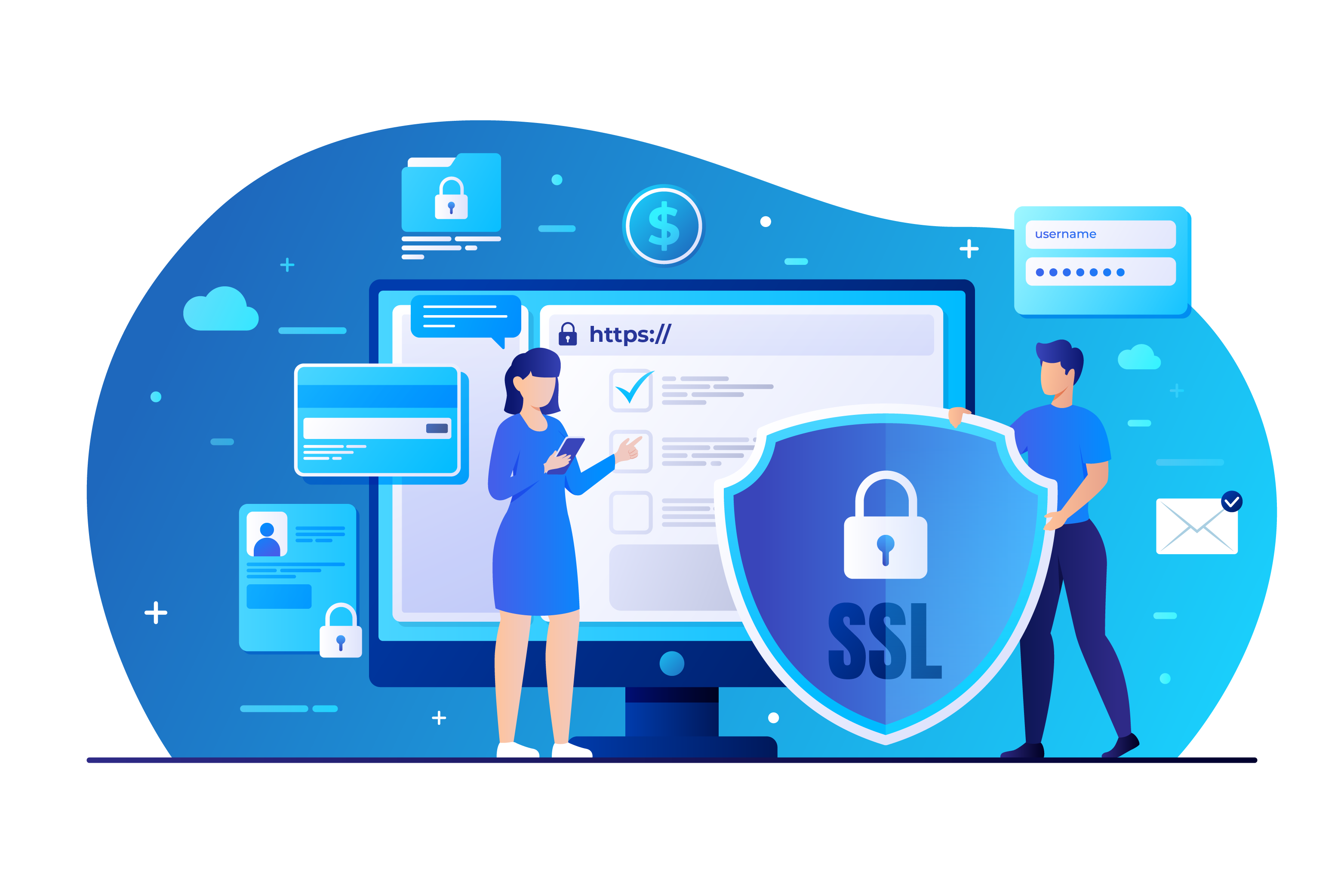Secure Socket Layer (SSL)
What is SSL Certificate?
An SSL certificate is a digital certificate that authenticates a website's identity and enables an encrypted connection. SSL stands for Secure Sockets Layer, a security protocol that creates an encrypted link between a web server and a web browser. Companies and organizations need to add SSL certificates to their websites to secure online transactions and keep customer information private and secure, as well as preventing third parties from reading or modifying information transferred between two systems.

How to tell if a website has an SSL Certificate?
The easiest way to see if a site has an SSL certificate is by looking at the address bar in your browser :
- If the URL begins with HTTPS instead of HTTP, that means the site is secured using an SSL certificate.
- Secure sites show a closed padlock emblem, which you can click on to see security details – the most trustworthy sites will have green padlocks or address bars.
- Browsers also show warning signs when a connection is not secure such as a red padlock, a padlock which is not closed, a line going through the website's address, or a warning triangle on top of the padlock emblem.
How to view SSL Certificate ?
To view the details of an SSL certificate, you can click on the padlock symbol located within the browser bar. Details typically included within SSL certificates include :
- The domain name that the certificate was issued for;
- Which person, organization, or device it was issued to;
- Which Certificate Authority issued it;
- The Certificate Authority's digital signature;
- Associated subdomains;
- Issue date of the certificate;
- The expiry date of the certificate; and
- The public key (the private key is not revealed).

TYPES OF SSL CERTIFICATE
-
Extended Validation certificates (EV SSL)
This is the highest-ranking and most expensive type of SSL certificate. It tends to be used for high profile websites which collect data and involve online payments. When installed, this SSL certificate displays the padlock, HTTPS, name of the business, and the country on the browser address bar. Displaying the website owner's information in the address bar helps distinguish the site from malicious sites. To set up an EV SSL certificate, the website owner must go through a standardized identity verification process to confirm they are authorized legally to the exclusive rights to the domain.
-
Organization Validated certificates (OV SSL)
The validation process to obtain this SSL certificate type is minimal, and as a result, Domain Validation SSL certificates provide lower assurance and minimal encryption. They tend to be used for blogs or informational websites – i.e., which do not involve data collection or online payments. This SSL certificate type is one of the least expensive and quickest to obtain. The validation process only requires website owners to prove domain ownership by responding to an email or phone call. The browser address bar only displays HTTPS and a padlock with no business name displayed.
-
Domain Validated certificates (DV SSL)
The validation process to obtain this SSL certificate type is minimal, and as a result, Domain Validation SSL certificates provide lower assurance and minimal encryption. They tend to be used for blogs or informational websites – i.e., which do not involve data collection or online payments. This SSL certificate type is one of the least expensive and quickest to obtain. The validation process only requires website owners to prove domain ownership by responding to an email or phone call. The browser address bar only displays HTTPS and a padlock with no business name displayed.
-
Wildcard SSL certificates
Wildcard SSL certificates allow you to secure a base domain and unlimited sub-domains on a single certificate. If you have multiple subdomains to secure, then a Wildcard SSL certificate purchase is much less expensive than buying individual SSL certificates for each of them. Wildcard SSL certificates have an asterisk * as part of the common name, where the asterisk represents any valid sub-domains that have the same base domain.

